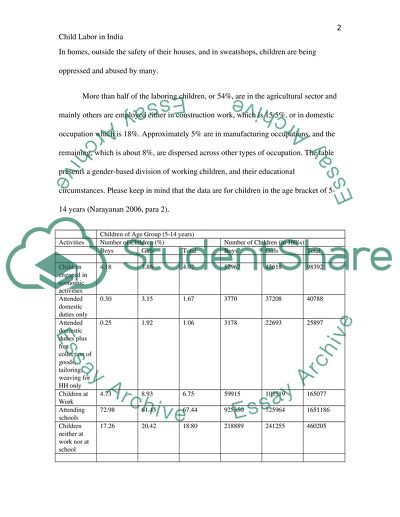Cite this document
(Child Labor in India Research Proposal Example | Topics and Well Written Essays - 2750 words, n.d.)
Child Labor in India Research Proposal Example | Topics and Well Written Essays - 2750 words. Retrieved from https://studentshare.org/sociology/1550513-child-labor-in-india
Child Labor in India Research Proposal Example | Topics and Well Written Essays - 2750 words. Retrieved from https://studentshare.org/sociology/1550513-child-labor-in-india
(Child Labor in India Research Proposal Example | Topics and Well Written Essays - 2750 Words)
Child Labor in India Research Proposal Example | Topics and Well Written Essays - 2750 Words. https://studentshare.org/sociology/1550513-child-labor-in-india.
Child Labor in India Research Proposal Example | Topics and Well Written Essays - 2750 Words. https://studentshare.org/sociology/1550513-child-labor-in-india.
“Child Labor in India Research Proposal Example | Topics and Well Written Essays - 2750 Words”, n.d. https://studentshare.org/sociology/1550513-child-labor-in-india.


